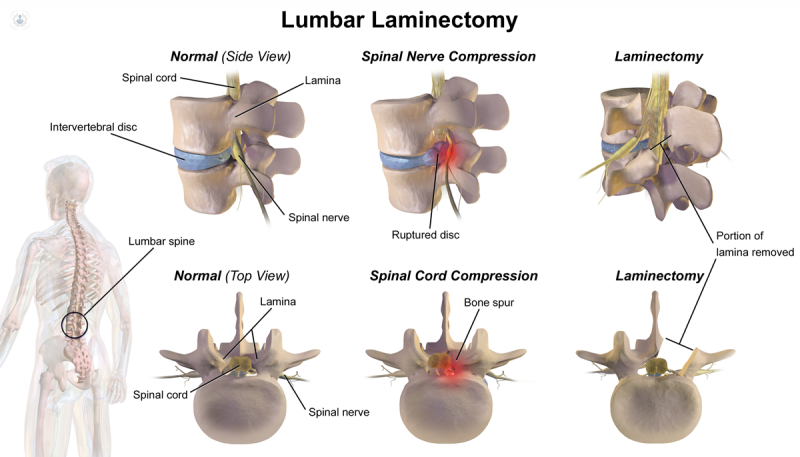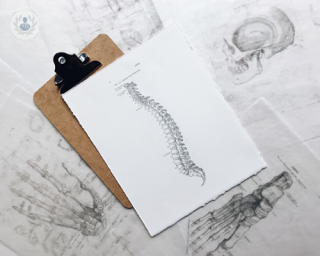Laminectomy
Mr Khalid Salem - Orthopaedic surgery
Created on: 11-13-2012
Updated on: 06-05-2023
Edited by: Aoife Maguire
What is a laminectomy?
A laminectomy, also known as an open decompression, is an operation performed to remove the lamina, part of the bone of a spinal vertebra. The spine is a structure that protects the spinal cord and is composed of 33 vertebrae divided into the cervical, thoracic, lumbar, sacral and coccygeal regions. The vertebrae are separated by intervertebral discs.

Why is it performed?
A laminectomy is usually performed to treat spinal injuries that compress the structures of the nervous system (spinal cord or spinal nerves), such as herniated discs, certain tumours, osteoarthritis, and, most commonly, spinal stenosis (a condition that mainly affects older people).
The main symptoms of this pathology are:
- numbness, spasms, or pain in the back
- weakness in the arms or legs
- difficulty or poor balance when walking
- bowel control problems
Surgery usually results in total or partial relief of symptoms.
What does it involve?
A laminectomy involves making a small incision in the skin, along the lumbar vertebrae, to separate the muscles and expose the bone. To relieve pressure on the pinched nerve and spinal cord a part of the vertebral lamina is removed. The nerve is then carefully moved to one side and the herniated part of the disc is removed. The muscles are then repositioned and the incision sutured.
In the case of cervical spine injuries, the approach is made from the front, while in the case of lumbar injuries, it is made from the back.
Preparing for a laminectomy
Before having a laminectomy, a spinal x-ray must be performed. An MRI or CT scan may also be necessary to confirm spinal stenosis. To prepare for the procedure you may need to stop smoking, stop taking certain medications, and refrain from drinking alcohol. You must also tell the doctor about any other pre-existing conditions you have.
Finally, you may be asked to not eat or drink 6 to 12 hours before the surgery.
Post-operative care
In principle, after the operation you can get up and walk when the anaesthetic wears off. However, you will usually be discharged from hospital between one and three days after the intervention.
Once at home, you will need to rest in order to heal the wound according to the doctor's instructions. Excessive bending, lifting, or twisting is not recommended until about six weeks after surgery.
Alternatives to this treatment
A laminectomy may be complemented by arthrodesis (spinal fusion) to help stabilise sections of the spine. This technique may also be part of a more major procedure such as a discectomy (surgery to remove all or some of the cushion that helps support part of the spine).






